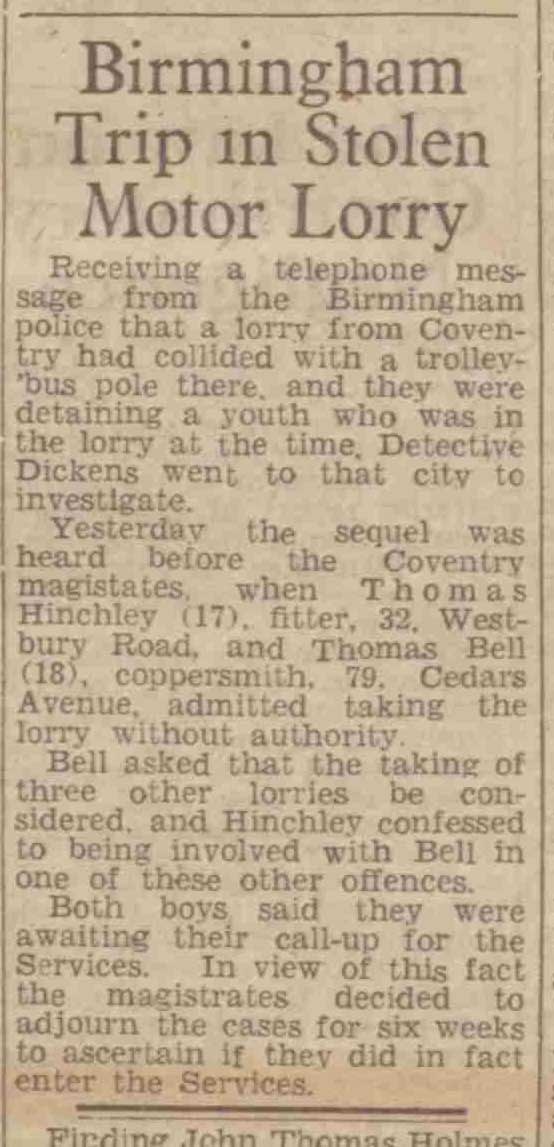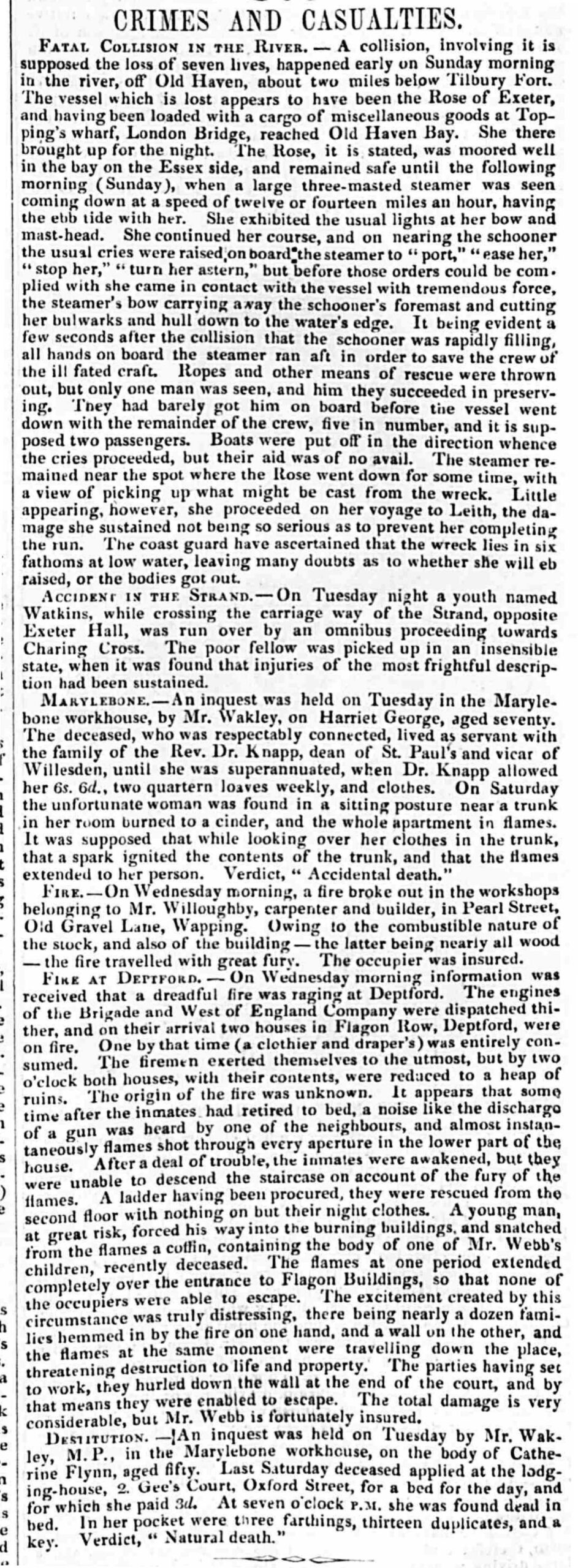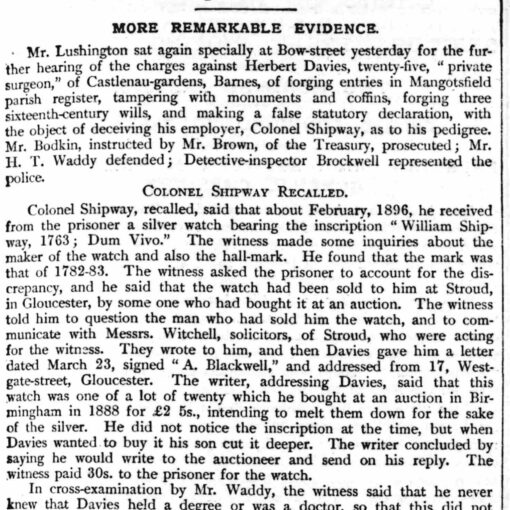The 1887 Board of Trade report revealed that 919 people were killed and 3,590 injured on UK railways. Of these, 121 deaths and 1,297 injuries involved passengers, with only 25 fatalities caused by train collisions; the rest resulted from other incidents, often due to passenger carelessness. Railway workers and contractors accounted for 422 deaths and 2,075 injuries, reflecting the dangers of their roles. Additionally, 203 trespassers and 70 suicides contributed to the toll, while level crossings claimed 63 lives. A further 58 deaths and 4,157 injuries occurred on railway premises unrelated to train movements, highlighting widespread safety risks across the rail network.

Kentish Independent – Saturday 11 August 1888
THE RAILWAY DEATH ROLL.
The general report of the Board of Trade on the accidents which have occurred on the railways of the United Kingdom during 1887 has been issued. The total number of persons killed in the working of the railways was 919, and the injured 3590. Of these 121 persons killed and 1297 injured were passengers; but of these only 25 were killed and 538 injured in consequence of accidents to or collisions between trains; the deaths of the remaining 96 passengers and the injuries to 759 are returned as due to a variety of other causes, and especially to want of caution on the part of the individuals themselves. Of the remainder, 422 killed and 2075 injured were officers or servants of the railway companies or of the contractors. Of suicides there were 70; of trespassers, 203 were killed and 114 injured; of persons passing over the railway at level crossings, 63 were killed and 35 injured; and of other persons from miscellaneous causes, 40 were killed and 69 injured. In addition, there were 58 persons killed and 4157 injured from accidents on their premises not connected with the movement of the railway vehicles.
Study and Analysis:
Content Overview:
The article summarises the annual accident statistics on British railways for the year 1887, as reported by the Board of Trade. It offers a detailed breakdown of the fatalities and injuries across different categories of people (passengers, railway workers, trespassers, suicides, and others).
Key Figures:
- Total Killed and Injured:
- Killed: 919
- Injured: 3590
- Passengers:
- Killed: 121
- Injured: 1297
- Accidents due to train collisions: Only 25 deaths and 538 injuries.
- Other Causes (e.g., personal carelessness): 96 deaths and 759 injuries.
- Railway Workers and Contractors:
- Killed: 422
- Injured: 2075
- Other Categories:
- Suicides: 70 deaths.
- Trespassers: 203 deaths, 114 injuries.
- Level Crossings: 63 deaths, 35 injuries.
- Miscellaneous Causes: 40 deaths, 69 injuries.
- Accidents unrelated to railway movement: 58 deaths and a significant 4157 injuries.
Observations and Commentary:
- Passenger Safety:
- The report highlights a relatively low number of passenger fatalities (121 deaths) considering the scale of railway operations. Of these, only 25 deaths resulted from direct train collisions, suggesting that train safety mechanisms were somewhat effective.
- The majority of injuries and deaths (759 cases) occurred due to passengers’ lack of caution, possibly indicating unsafe behaviours like boarding moving trains, falling from platforms, or standing in dangerous areas.
- Railway Workers:
- Railway workers bore a significant burden of fatalities (422) and injuries (2075). This emphasises the hazardous nature of their roles, likely involving manual labour around heavy machinery, tracks, and locomotives.
- Trespassers and Suicides:
- Trespassers accounted for 203 deaths, illustrating the dangers of unauthorised access to railway lines.
- Suicides (70 cases) highlight that railways were a common method for individuals taking their lives, a trend still notable in modern times.
- Level Crossings:
- Level crossings were responsible for 63 deaths and 35 injuries, showing their longstanding status as a risk point where rail meets road.
- Accidents on Premises:
- The report mentions 4157 injuries unrelated to railway vehicles’ movements, indicating accidents on railway premises such as stations, maintenance areas, and depots. This figure surpasses injuries caused by operational trains, showing a broader scope of risk.
Significance:
- Historical Context: In 1887, the railway network was central to the UK’s industrial economy, yet safety standards were still developing. The report highlights the need for further safety measures to protect both workers and passengers.
- Comparisons to Today: Modern railways benefit from significant technological advancements, such as automated systems, safety signals, and improved infrastructure, drastically reducing deaths and injuries compared to 19th-century statistics.
- Safety vs. Human Error: The report underscores human error (lack of caution) as a recurring factor in accidents, a challenge that persists in modern transport safety.
This article provides a sobering glimpse into the dangers faced by passengers, workers, and others during the height of the Victorian railway boom. It serves as a critical document in understanding historical transportation safety and its evolution.
Free to use British Newspaper Research Service
British newspapers offer a treasure trove of information for family historians. They capture moments in time, providing context, character, and community insight that official records cannot. With the free service provided by Old British News, this research becomes even more accessible, enabling historians to delve into rich, untold stories of their relatives. By combining these resources with other records, family historians can create a more complete and engaging picture of the past.
I search historical articles to locate mentions of your ancestors—whether they were involved in notable events or simply part of the everyday life reported in these newspapers. If relevant articles are found, I deliver them to you in a PDF format at no cost.
If I find articles, they’ll be sent to you in a clear, organised PDF. If not, you’ll be informed right away. See here.




